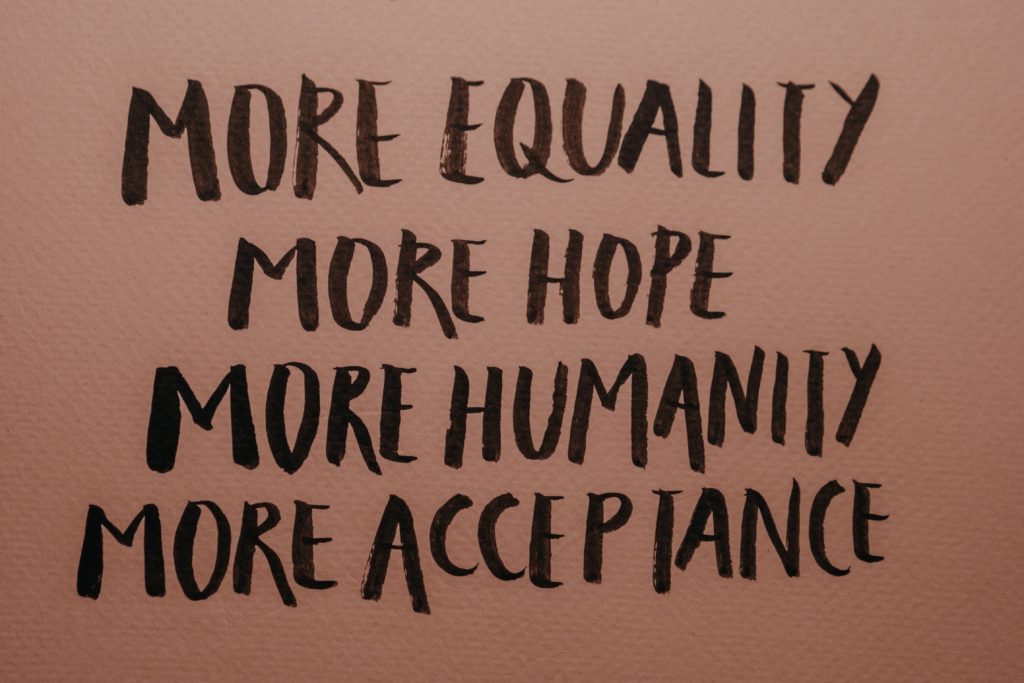What is Dyslexia Discrimination? (And how to Avoid It)

Featured image by Andrea Piacquadiao, Pexels.com
Blog post updated on 25th July 2022.
Unfortunately, people with dyslexia are highly likely to be discriminated against. This includes in the workplace. Here is what dyslexia discrimination is and how to avoid it.
What is Dyslexia Discrimination?

Image by RDNE Stock project, Pexels.com
In the example of dyslexia discrimination in the workplace, this is when the employer has not “provided the necessary tools” for candidates to apply for a job, “or fulfil their job role” without difficulty.
When an employer lacks dyslexia awareness and gives everyone in the workplace “the same basic tools and information,” they unintentionally put dyslexic candidates at a disadvantage. Even though the employer’s lack of dyslexia awareness is unintentional, it is still looked upon as dyslexia discrimination.
Dyslexia discrimination can also be direct, for example when an employer fires an employee just because they have dyslexia.
The best way for an employer to prevent dyslexia discrimination in the workplace is to provide reasonable adjustments from the very start. These can include giving employees verbal instructions as well as written instructions and installing assistive technology onto the office computers.
Is Dyslexia a Protected Disability?

Image by Polina Kovaleva, Pexels.com
Under the Equality Act 2010, dyslexia and all other disabilities are protected characteristics. This means that people with these characteristics are protected from discrimination.
Dyslexia is a lifelong condition that has a significant impact on how a person carries out day-to-day activities, which is why it is listed as a disability under the Equality Act 2010.
How to Prevent Dyslexia Discrimination During Recruitment

Image by Gustavo Fring, Pexels.com
- The employer can prepare the candidate such as giving them extra time for a written test. The dyslexic candidate can take this test in a separate room from other candidates.
- A candidate can disclose their dyslexia in a CV, for example writing about how it has taught them to develop organisational methods and time management skills to assist with their short-term memory recall and forward planning.
- If a candidate is applying for a teaching role, they can mention their ability to empathise with dyslexic pupils and students and be a positive role model for them on their cover letter.
- During an interview, the candidate can expand on the beneficial effects their dyslexia has had on their life through a two-way conversation.
- Employers should ensure the application forms for candidates are compatible with voice assisted software.
- If an employer uses an accessibility mode on the application forms, they should locate where it stands out to instantly catch the candidate’s attention.
- Employers should also ensure that the application forms can allow the candidate to adjust the text size and change the background colour.
- Employers can also provide application forms in a larger format. This is especially important for candidates who have visual stress.
- Employers should not state that CVs are not accepted because candidates can see them as reasonable adjustments and alternatives to application forms.
- If employers require additional information, such as passport numbers, they should request them at the beginning of the application process.
How to Prevent Dyslexia Discrimination in the Workplace

Image by Mikhail Nilov, Pexels.com
In addition to the aforementioned reasonable adjustments, employers should do the following to prevent dyslexia discrimination in the workplace:
- Allow another colleague to proofread for a dyslexic colleague.
- Provide dyslexic colleagues with audio-recording devices, such as Dictaphones, to allow them to record meetings and instructions rather than write down meeting minutes and instructions for tasks.
- Give the employee extra time to complete written tasks.
- Provide dyslexic employees with 1:1 skills training that is designed to help them work more effectively. The skills training should also help employees overcome problems that are associated with their dyslexia such as organisation, planning, time management and short-term memory recall.
- Provide dyslexic employees with assistive technology training.
- Give dyslexic employees one instruction at a time.
- Break large pieces of texts into bulleted lists, like this one.
- Provide coloured overlays, glasses and contact lenses (for more information on these, please read this blog post: https://exceptionalindividuals.com/about-us/blog/dyslexia-glasses-coloured-overlays-how-do-they-work-exceptional-individuals/)
- Encourage employees to take regular breaks and alternate tasks.
- Switch on the spelling and grammar checker automatically on word processing software.
- Encourage employees to produce spider-diagrams/flow charts/mind maps to convey complex ideas and subjects. Employees can do this in mind-mapping software such as MindManager.
- Explore our dyslexia workplace needs assessment to find out how your employees can be supported.
Dyslexia Discrimination | Case Files on REAL Employment Tribunals Webinar
Nat Hawley, our Head of Community, has hosted a webinar about real employment tribunals where dyslexic employees have been discriminated against at work. The webinar also covers reasonable adjustments, the challenges that dyslexic employees face, and how employers can better support dyslexic employees.
If you think you might have dyslexia, you can take our free am I dyslexic quiz to see exactly which signs you have.



